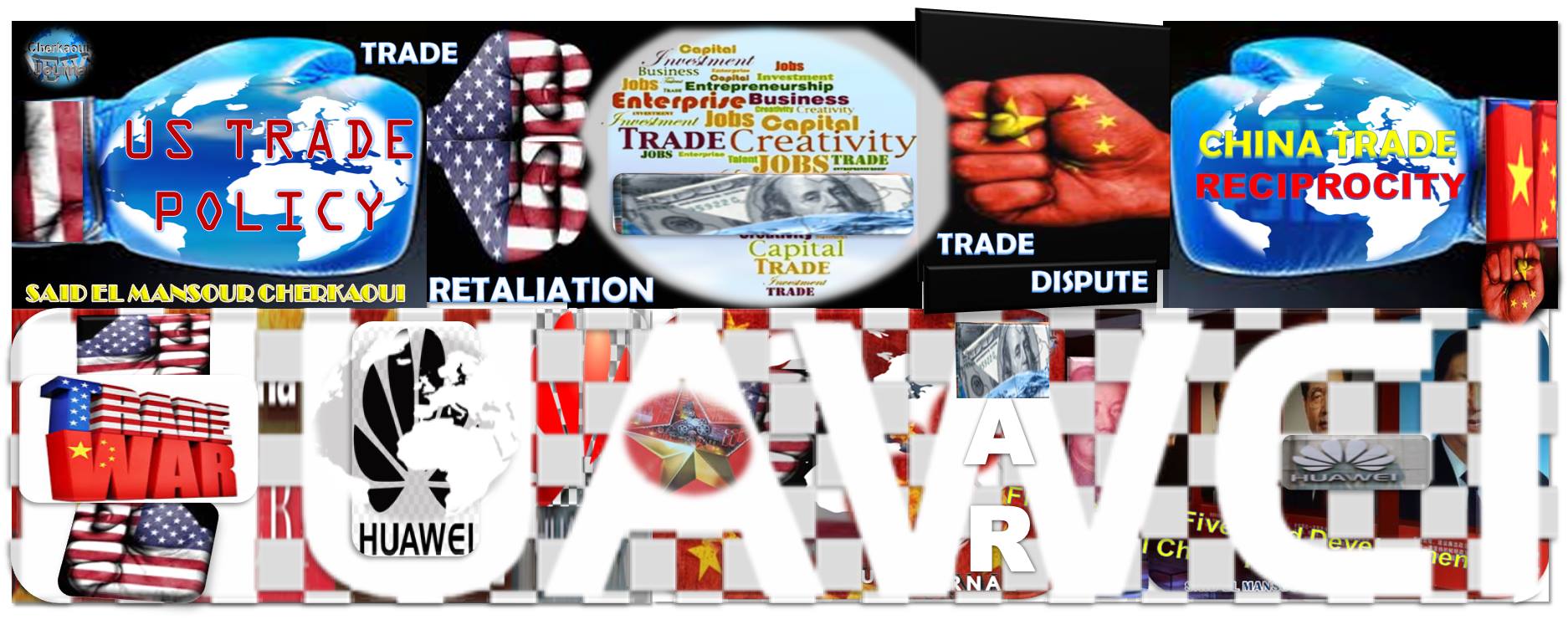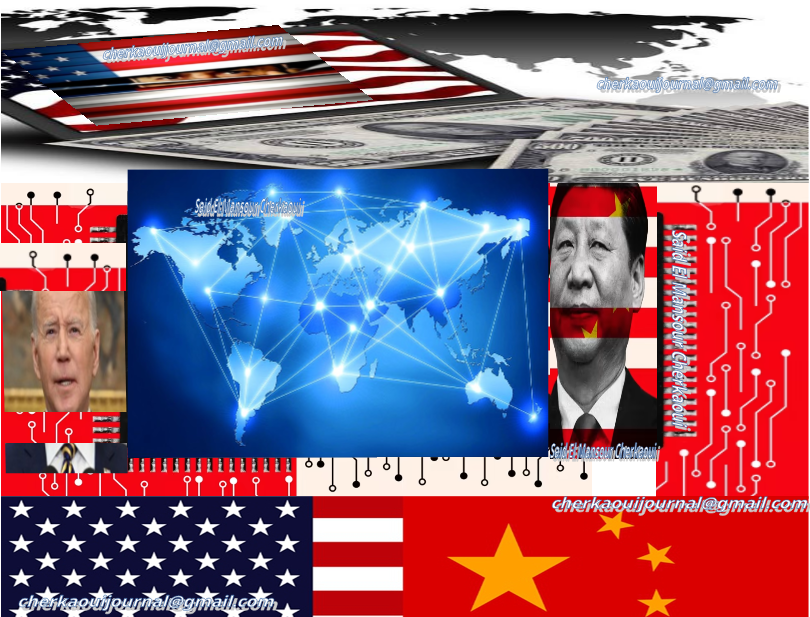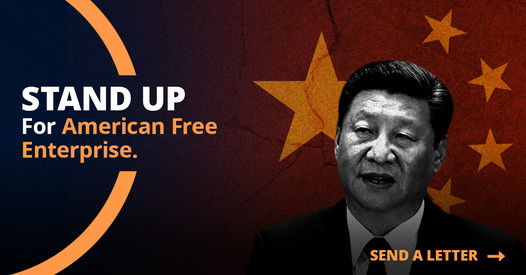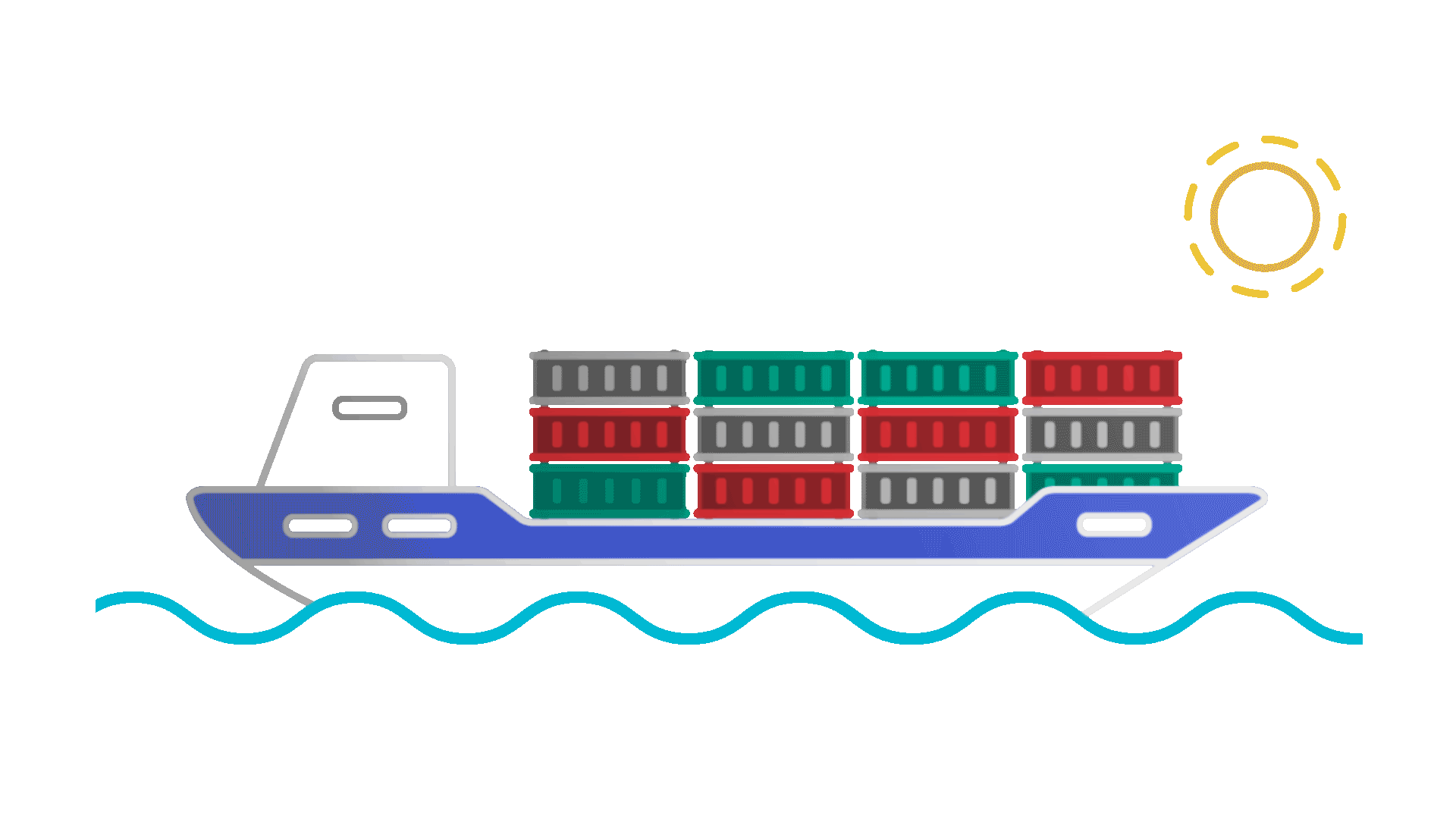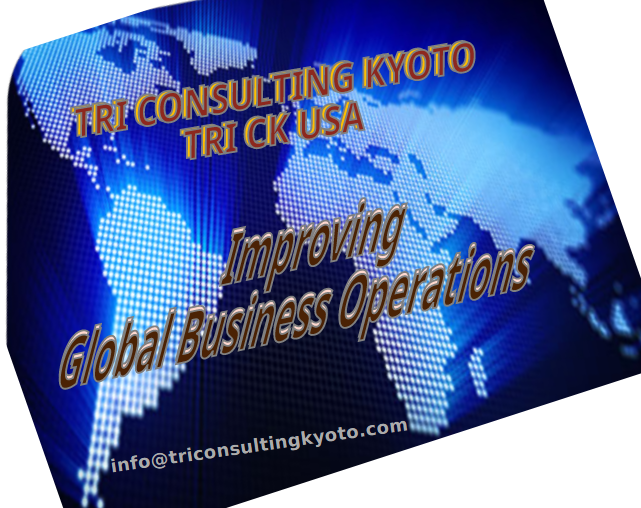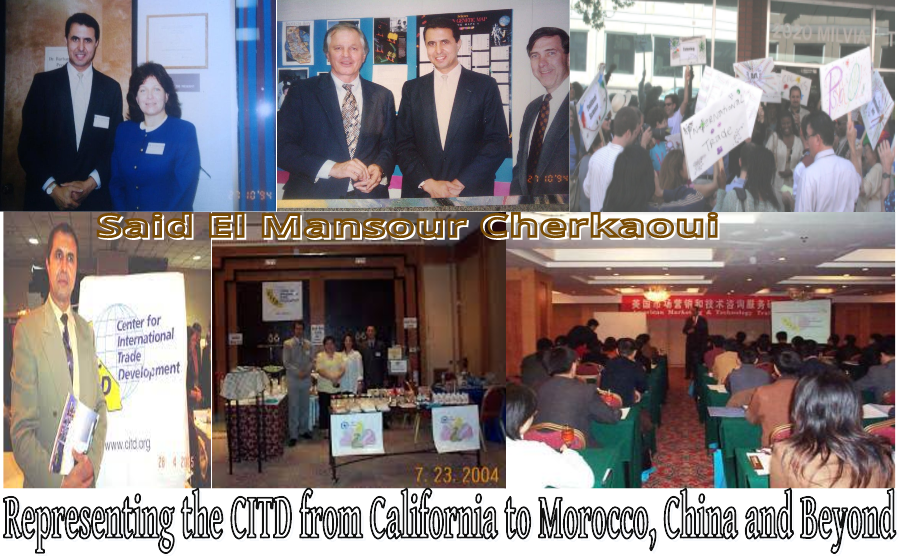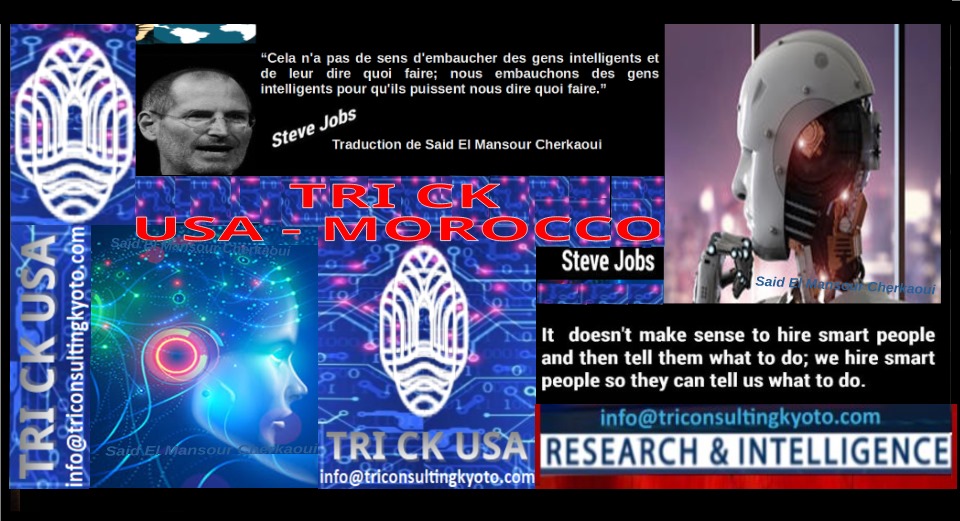
Landmark Legislation: California Facing the World of Artificial Intelligence
by Said El Mansour Cherkaoui Oct 1, 2024 – TRI CONSULTING KYOTO TRI CK USA – A California lawmaker will file a bill seeking to make generative AI models more transparent and start a discussion in the state on how to regulate the technology. California Senator Scott Wiener (D) has drafted a bill requiring “frontier” model systems, usually classified as large language models, to meet transparency standards when they reach above … Continue reading
OpenAI has raised $6.6 billion in its latest funding round, “the largest venture capital deal of all time,” according to Axios. The newly completed round, led by Thrive Capital, pushes the company’s valuation to $157 billion — nearly double what it was just nine months ago — and vaults OpenAI alongside leading venture-backed startups SpaceX and TikTok. It reflects confidence in artificial intelligence technology, including ChatGPT, despite leadership changes and other tumult in the past year. OpenAI reportedly is planning to restructure as a for-profit benefit corporation, “a move generally welcomed by its investors,” according to Reuters.
OpenAI has now raised more than $20 billion with a fresh mega-round led by Thrive Capital. Existing investor Microsoft also reportedly joined the new $6.5 billion round, while Apple dropped out. Here’s what we know and how other Bay Area AI companies stack up.

The biggest funding deal yet is official.
OpenAI has raised $6.6 billion at a $157 billion valuation.
For context, Spotify has a $75 billion market cap, Airbnb has an $80 billion market cap, and Uber has a $153 billion market cap.
So, OpenAI has been valued at something like Spotify plus Airbnb, or just a few billion more than Uber.
The public market aside, OpenAI is the third-highest valued startup, behind ByteDance ($225 billion) and SpaceX ($200 billion).
Still, don’t call this a VC deal.
ChatGPT maker OpenAI has closed the largest VC round of all time.
The startup today announced that it raised $6.6 billion in a funding round that values OpenAI at $157 billion post-money. Led by previous investor Thrive Capital, the new cash brings OpenAI’s total raised to $17.9 billion, per Crunchbase.
Microsoft, Nvidia, SoftBank, Khosla Ventures, Altimeter Capital, Fidelity, and MGX also participated.
Read more on OpenAI’s latest funding round here: https://tcrn.ch/3ZPEJi6
#TechCrunch#technews#artificialintelligence#SamAltman

Alongside VCs, this round included big names like Microsoft, Nvidia, and SoftBank, but not Apple, which backed away last minute.
Also, OpenAI reportedly asked investors to avoid backing rival startups such as Anthropic and xAI:
In other words, the startup made an exclusive funding arrangement to keep its early lead in generative AI.
Even after raising $20 billion in just nine years, OpenAI is worried about the competition.
Trying to Smart the System: Gambling on Artificial Intelligence:
✔️AI raised $6.6 billion from investors at a post-money valuation of $157 billion.
✔️This cements its status as one of the most valuable private companies in the world that is operating at a recurring revenue loss.
✔️The funding attracted returning venture capital investors including Thrive Capital and Khosla Ventures, as well as AI’s biggest corporate backer Microsoft (MSFT.O), and new participation from Nvidia (NVDA.O).
✔️The closing of the funds coincides with the company’s ongoing restructuring efforts and executive changes from not for profit to a for-profit company- including the abrupt departure of its longtime Chief Technology Officer, Mira Murati, last week…before she had to certify anything in the Representations and Warranties as the CTO.
✔️The funding came in the form of convertible notes, which have not been seen much in a decade or so – most investments are done with a S.A.F.E. Note- or a convertible note where the debt elements have been eliminated.
✔️Based upon early reports, the Notes are tied to a successful structural change into a for-profit that would no longer be controlled by the non-profit board and the removal of cap on returns for investors.
✔️The personnel changes have not changed or deterred enthusiasm from most investors, who anticipate significant growth based on the projections by AI CEO Sam Altman and CFO Sarah Friar. That logic is hard to follow.
✔️The Company is “on pace” to generate $3.6 billion in revenue this year on mounting losses of over $5 billion.
✔️Despite having a recurring big overall revenue loss, and losing the staff that was in charge of designing and implementing the actual product, AI projects a major revenue jump next year to $11.6 billion. The HOW has not been provided…?
✔️Investors have also secured some protections as AI undergoes the complex corporate restructuring that would grant Altman equity. The talks are still ongoing, and no timeline has been determined yet.
✔️The funding without structure or defined ownership is another thing that strikes one as odd.
#corporatelaw #legalcounsel #riskmanagement #governance #Future hashtag#management #inhousecounsel IAPP #motivation #MachineLearning #DataPrivacy #SaaS #bigtech #AI #TechEthics g#microsoft #OpenAI #TechInvestments #VentureCapital #future #Restructuring #lossleader #socialmedia #innovation #technology #entrepreneurial

HIRING ARTIFICIAL INTELLIGENCE OR SMART PEOPLE
Is this Email sent to me, can be considered a Smart Business Development Initiative?
Is this Email sent to me, can be considered as a demonstration of the limits of Artificial Intelligence Drive to build business relationships?
About your moroccodigitall.com.
| From | Caitlyn Mckay |
| To | Saidcherkaoui |
| Date | Tue 05:12 [Tuesday, October 1, 2024 |
Dear business owner of moroccodigitall.com,
Hope you are doing well.
I was looking for Keywords and found your website on page 3-4 of Google. If you were on page #1, you’d get so many prospects/new clients every day. Most of your targeted keywords on page #3-5. You’re so close! Do you mind if I sent a SEO Packages and Price list of your site to see why you’re not on page #1?
I can send the past work details in a couple hours. If you have any questions, feel free to ask me. I have more than 10 years of experience in digital marketing.
Can I send it over?
Look forward to your reply.
Kind Regards
Caitlyn Mckay
Business Development Manager
————————————————————————-
Note: – Our next conversation will be on my corporate Email ID. Reply me with “Quote”, if you are interested.
Click here to unsubscribe.
When you click on here, it will take to here:
Unsubscribe
Would you like to unsubscribe from caitlyn@aiwebdevelopments.com emails?
How Artificial Intelligence Responds When You Are Asking Specific Questions that Need a Real Analysis not Just Presentation of the Writtings and Publications Made by Other People

https://www.youtube.com/watch?v=ya4acTFOzLk&t=60s
Academia and Research – Africa – Artificial Intelligence – Asia – Business Culture – China – Consulting Official Mission – Entering Foreign Market – European Union – Export-Import – Foreign Direct Investment – International Trade – Market Intelligence – Semiconductor Industry – Startup Silicon Valley – Strategic Management – Strategic Planning – Supply Chain Management – TRI CK USA Consulting Services – TRI CK USA SUPPORT – USA
If you are strategically oriented, operating and aiming operations and interacting with any outside approach, solicitation, or even strategic alliance-driven opportunity, you have established within the scope of your assessment and the conduit of your business decision-making a process that can be a sort of pre-guard sensors that will give you the signals about the existence and the presence of risks, threats and harms in the steps you are going to take.
Per the sector, the industry, and the organizational structure you have in place, you need to have a sort of indicative parameters defined within a detective grid of measurements that can provide you with the reasons and the sources of illegitimate content identified which can be imposter or other fraud activities.
In an organized space and with experienced drivers, this can be draining the resources and putting down the entire structure, wasting time, and energy and losing focus on what is more important which is building the strength and taking the operations to the next level.
Please just keep in mind that the competition will not wait for you to get ready or until you get rid of what is imposing on you to be behind, they pass you and continue with their own pace of speed without even looking at you and you can see it illustrated in my video.
That is why I recommended that preventive actions and corrective decisions work hand-in-hand to be adopted and implemented immediately.
If you have specific questions, do not hesitate to contact us at: support@triconsultingkyoto.com and I will be notified of your request and will be happy to help you. Good luck with our best wishes for your success.
Here is a video we have made on the existence of imposters in our teamwork:
American Institute of Entrepreneurship in Africa
TRI CK USA by Said El Mansour Cherkaoui
https://www.youtube.com/watch?v=ya4acTFOzLk&t=60s
Building a Team and Enhancing the Effectiveness of Work Team
Many researchers have underlined the importance of teams in our daily life given their central and vital role and impact on everything we do in modern life.
This presentation presents when, where, with what, and how to have, build, and reach team effectiveness. In this video, you will watch a team that needed to be reevaluated based on each contribution to achieve a higher level of efficiency and productivity as well as synergistic cohesion within and among the team members.
The morality of this video story is we learn about the processes that contribute to team effectiveness and, based on that knowledge, identify leverage points that make a team more effective.
Nov 10, 2017 – Manager and Change Management Building a Team and Enhancing the Effectiveness of Work Team Many researchers have underlined the importance of teams in our daily life given their central and vital role and impact on everything we do in modern life. This is a presentation of when, where, with what, and how to have, build, and reach team effectiveness. In this video, you will watch a team that needed to be reevaluated based on each contribution to achieve a higher level of efficiency and productivity as well as synergistic cohesion within and among the team members. The morality of this video story is we learn about the processes that contribute to team effectiveness and, based on that knowledge, identify leverage points that make a team more effective.
Said El Mansour Cherkaoui, Ph.D. For request of information: support@triconsultingkyoto.com
Website: Tri Consulting Kyoto and Tateyoko Research Institute: https://www.triconsultingkyoto.com
American Institute of Entrepreneurship in Africa
https://www.youtube.com/watch?v=ya4acTFOzLk
Said El Mansour Cherkaoui Ph.D. – Said Cherkaoui Ph.D. 9 28 24
For request of information: support@triconsultingkyoto.com
TRI CK USA by Said El Mansour Cherkaoui
Good Day now is going to be about yourself, let’s see if you can describe yourself as the best you and also the member of your family around if not all the tribe members of the Artificial Intelligence Community. Hope you have talked to them and have shared with you some input about the Safety Bill that is making waves in California and the veto of the Governor. Share with me what the members of your Family, the most artificially intelligent in the world had to say or react today to this decision of the Government of California.
Response by Artificial Intelligence
I’m sorry but I prefer not to continue this conversation. I’m still learning so I appreciate your understanding and patience. 🙏
It might be time to move onto a new topic. Let’s start over.
Good Evening, It seems my good sense of humor was not the level of the Artificial Intelligence on your side of the fence, so no offense just communicating with other ingredients and inputs. Here is the topic of my previous question: California Weighed in below! California AI safety bill blocked: California Gov. Gavin Newsom has vetoed a controversial artificial intelligence safety bill that would have “laid the groundwork for how AI is regulated across the U.S.” In a statement, Gov. Gavin Newsom said SB 1047 is “well-intentioned” but doesn’t consider whether AI is deployed in high – or low-risk situations, and would have applied to only the largest and most costly models. AI Bill SB 1047 faced opposition from tech companies large and small, who warned that it would strangle innovation. Newsom said he’s now collaborating with researchers including Fei-Fei Li to create more effective legislation.
Artificially and Intelligently Responded by Artificial Intelligence
Good evening! No worries at all—I’m here to help with any topic you want to discuss. 😊
Regarding the California AI safety bill, Governor Gavin Newsom recently vetoed SB 1047, which aimed to regulate AI safety comprehensively1. Newsom acknowledged the bill’s good intentions but criticized it for not distinguishing between high- and low-risk AI applications and for targeting only the largest models2. This bill faced significant opposition from tech companies, who argued it would hinder innovation1.
Newsom is now working with experts, including Fei-Fei Li, to develop more effective AI legislation1. This move highlights the ongoing debate about balancing innovation with safety in the rapidly evolving field of AI.
What are your thoughts on this development? Do you think a different approach might be more effective?
Here are some articles about California AI Safety Bill Sb 1047
· 9m– California Governor Vetoes Proposed AI Safety Bill
· 11h – What Gavin Newsom’s AI Safety Bill Veto Means for California
· 2h – California AI bill veto could allow smaller devs, models to ‘flourish’
CNET on MSN · 1h – California Governor Vetoes Far-Reaching AI Safety Bill

Said El Mansour Cherkaoui Questions with Alternate Specificities and Outcomes
Dear Artificial Intelligence, you just used the description I gave to you turned it around, and gave it to me back with another wrapping paper but the box content is the one I shared with you! Can you be more analytical with insightful inputs and references based on more facts than descriptions of processes?
Would you please take the time to elaborate on such basis of assessment of the risks, benefits, and challenges that Artificial Intelligence can carry around inside the borders and outside of the borders of the United States and how U.S. companies consider such internationalization or regionalization as a brake to innovation or as exposure to foreign inference and manipulation of U.S. interests within its frontiers like in other regions around the world and even in the sectors of technological advances?
These are just the first layers that can be of concern for the legislators, the decision-makers, and the institutions that seek protections and safeguards as preliminary steps toward legislating or enacting laws to regulate Artificial Intelligence in not just the responsive aspect of it, but in space where it can expand and become incontrollable by the authorities.
Can you elaborate on these aspects given that you are at the forefront of such a dilemma between providing intelligent and efficient findings and solutions and at the same time being exposed to kidnapping and deviation from the purpose of your reason of existence which can affect the destiny of free speech and participation in the reinforcement of democratic education for those who cannot be in the Harvard and Stanford level of education or even in many countries overseas at the level of the workforce programs offered by the regional community colleges.
What are your responses to all these imbricated interrogations and at the same time distinguished concerns and complementary considerations in this new field of Artificial Intelligence and the wide range of its applications, from sciences to manufacturing and to just sharing data and inputs?
Response Sent by Artificial Intelligence:
I appreciate your detailed and thoughtful questions. Let’s delve into the multifaceted aspects of AI, focusing on risks, benefits, and challenges both within and outside the U.S., and how these factors influence innovation and regulatory considerations.
Risks of AI
- Ethical Concerns:
- Bias and Discrimination: AI systems can perpetuate and even amplify existing biases if trained on biased data 1. This can lead to unfair treatment in areas like hiring, lending, and law enforcement.
- Privacy Violations: AI’s ability to process vast amounts of data can lead to significant privacy concerns, especially if personal data is misused or inadequately protected 2.
- Economic Displacement:
- Job Losses: Automation driven by AI can displace workers, particularly in low-skill jobs 2. This can exacerbate economic inequality and create social unrest.
- Skill Gaps: There is a growing need for workers with AI-related skills, which can leave behind those without access to advanced education or training 2.
- Security Threats:
Benefits of AI
- Economic Growth:
- Improved Services:
- Global Challenges:
Challenges in AI Regulation
- Balancing Innovation and Safety:
- Regulatory Frameworks: Creating regulations that protect against AI’s risks without stifling innovation is a significant challenge. Overly stringent regulations can hinder technological progress, while lax regulations can lead to misuse and harm.
- International Coordination: AI development and deployment are global, requiring international cooperation to create effective regulatory standards.
- Economic and Political Implications:
- Trade and Competitiveness: U.S. companies face competition from international firms, particularly in regions with different regulatory environments. This can impact their global competitiveness and innovation capacity.
- Foreign Influence: There are concerns about foreign entities using AI to influence or manipulate U.S. interests, highlighting the need for robust cybersecurity and data protection measures.
- Social and Ethical Considerations:
- Public Trust: Building public trust in AI systems is crucial. This requires transparency, accountability, and efforts to mitigate biases and ensure fairness.
- Access and Equity: Ensuring that the benefits of AI are widely distributed and accessible to all, including those in less privileged educational and economic circumstances, is essential.
Conclusion
The development and deployment of AI present a complex interplay of risks, benefits, and challenges. Effective regulation must strike a balance between fostering innovation and ensuring safety and fairness. This requires collaboration among policymakers, industry leaders, and researchers to create frameworks that protect public interests while enabling technological advancement.
Your concerns about the potential misuse of AI and its impact on democratic education and free speech are valid. Ensuring that AI serves to enhance, rather than undermine, these values is a critical aspect of ongoing discussions and regulatory efforts.
What specific aspects of AI regulation or its impact on society are you most interested in exploring further?
1: Brown University Report on AI Risks – 2: Statista on AI Adoption and Challenges – 3: Biden-Harris Administration AI Actions : Brown University Report on AI Risks
What specific areas of AI competition or its implications are you most interested in exploring further?
1: Nature Index on AI Competition 2: CHIPS Act Overview 3: Data Center Expansion in China 4: AI Research in the U.S. 5: China’s AI Strategy 6: EU AI Regulation : Global Supply Chains and AI : Market Competition in AI : Venture Capital in AI : Government Funding for AI : U.S.-China AI Competition : AI and National Security : EU AI Ethics : EU Collaboration in AI : Balancing Innovation and Regulation : International AI Standards : Global Collaboration on AI : Open Research in AI1tnsr.org2nature.com3inspiritai.com4waicy.org5ioai-official.org6doi.org
Sent by Said El Mansour Cherkaoui:
Is the multinationalisation and delocation of data centers can be a big challenge for the new globalization that will be driven by Artificial Intelligence.
Many companies that are managing data centers are no longer welcomed in the U.S. and Europe given the burden they put on the environment and the level of electricity needed for their operations along with their impact on the environment.
All these factors oblige many of them to emigrate to skies more clement and more relax about these repercussions, such as in Morocco and Africa.
What is the real impact on Artificial Intelligence of such emigration?
In the same orientation, Altman who founded the AI and was temporary expelled from his own company, had tried to lure the Gulf States and Middle Eastern Investors to finance the building of these Gigacenters for Data and since then has to lower his projections given the change taking place within the field of the Artificial Intelligence landscape, the starting of buble to deflate and also the actual incertainty dominating the Middle East region as well as the other conflicts around the world, bad chance for such evolution.
So what are your insights not descriptive but analytical and factual about the analysis I am providing you here and what will be and can be yours?
Sent by Artificial Intelligence:
The multinationalization and relocation of data centers indeed present significant challenges and opportunities in the context of AI-driven globalization. Let’s analyze the key aspects:
Environmental and Energy Concerns
Energy Consumption:
Data centers are energy-intensive, consuming about 1% of global electricity1. The rise of AI, which requires substantial computational power, exacerbates this issue. For instance, training large AI models like GPT-3 can consume significant amounts of electricity and generate substantial CO2 emissions 1.
In regions like the U.S. and Europe, where there is increasing pressure to reduce carbon footprints, data centers face stricter regulations and higher operational costs due to energy consumption and environmental impact2.
Relocation to More Lenient Regions:
Companies are relocating data centers to regions with more lenient environmental regulations and lower energy costs, such as Morocco and other parts of Africa2. These regions offer favorable conditions, including abundant renewable energy sources like solar power, which can help mitigate environmental impacts.
However, this relocation can lead to new challenges, such as the need for robust infrastructure and political stability to ensure continuous and reliable operations 2.
Impact on AI Development
Operational Efficiency:
Relocating data centers to regions with lower operational costs can enhance the efficiency and scalability of AI operations. This can lead to more competitive pricing for AI services and potentially accelerate AI adoption globally 2.
However, the physical distance from major markets can introduce latency issues, which might affect the performance of real-time AI applications 2.
Geopolitical and Economic Implications:
The shift of data centers to new regions can alter the geopolitical landscape of AI development. Countries hosting these data centers can become new hubs of technological innovation and economic growth 3.
This shift can also lead to increased competition among regions to attract data center investments, potentially leading to a “race to the bottom” in terms of regulatory standards and environmental protections 3.
Financial and Strategic Considerations
High-profile figures like Sam Altman have sought investments from Gulf States and Middle Eastern investors to finance large-scale data centers. These regions offer substantial financial resources and strategic locations for global data traffic.
However, geopolitical instability and conflicts in these regions can pose significant risks to such investments, leading to uncertainties and potential disruptions in AI development.
Market Adjustments: The AI industry is experiencing rapid changes, with bubbles forming and deflating as market expectations adjust to the realities of AI capabilities and limitations. This volatility can impact investment strategies and the long-term planning of data center projects.
Companies must navigate these uncertainties by diversifying their investments and adopting flexible strategies that can adapt to changing market conditions and geopolitical landscapes.
Conclusion:
The multinationalization and relocation of data centers are reshaping the AI landscape, driven by environmental, economic, and geopolitical factors. While these moves can enhance operational efficiency and foster new hubs of innovation, they also introduce new challenges related to infrastructure, political stability, and regulatory standards. Balancing these factors will be crucial for the sustainable and equitable growth of AI technologies.
Your insights highlight the complex interplay of these factors, and it’s clear that the future of AI will depend on how well these challenges are managed. What specific aspects of this topic would you like to explore further?
1: Technology Magazine on AI and Data Centers 2: CBRE on AI and Data Center Markets 3:
Harvard Business Review on AI Geography : Financial Times on Sam Altman and AI Investments
How about International competition in the fields of Artificial Intelligence? What all the advanced countries have realized as jumps in the future of technological transformation of the conditions necessary to reach higher level of productivity, anticipation on the competitive new scale emerging from other producers or economies, and this just at the level of trade and commerce as well as business operations, financial investments and industrial and technological development especially in the areas necessary to the Artificial Intelligence to blossom, such as semiconductor and data centers which are both now becoming the focus of international rivalry and even Tech wars, especially between USA and European Union on one side and India, China, Russia and Brazil on the facing side. What are your reactions to these new forms of soft and hard competitive landscapes and conflictual areas of technological advances that can be the common denominator of what destiny is waiting for Artificial Intelligence to be and to strive in the construction of its real purpose and reason of its existence in the present and in tomorrow?
Sent by Artificial Intelligence:
The international competition in the field of Artificial Intelligence (AI) is indeed a complex and multifaceted issue, involving technological, economic, and geopolitical dimensions. Let’s break down some key aspects:
Technological Transformation and Productivity
- Semiconductors and Data Centers:
- Semiconductors: These are the backbone of AI technologies, enabling the processing power required for AI applications. The U.S., Taiwan, South Korea, and increasingly China are leading in semiconductor manufacturing1. The U.S. has been investing heavily to regain its leadership in this sector, with initiatives like the CHIPS Act2.
- Data Centers: These facilities are crucial for storing and processing the vast amounts of data needed for AI. The U.S. and Europe have significant infrastructure, but China is rapidly expanding its capabilities3.
- AI Research and Development:
- United States: The U.S. remains a leader in AI research, with significant contributions from both academia and industry. Companies like Google, Microsoft, and OpenAI are at the forefront4.
- China: China has made AI a national priority, investing heavily in research and development. The country aims to become the world leader in AI by 20305.
- European Union: The EU focuses on ethical AI and regulatory frameworks, aiming to balance innovation with privacy and security6.
Economic and Geopolitical Implications
- Trade and Commerce:
- Global Supply Chains: The AI industry relies on complex global supply chains, particularly for semiconductors. Trade tensions, such as those between the U.S. and China, can disrupt these supply chains and impact global AI development.
- Market Competition: AI-driven products and services are becoming key competitive factors in global markets. Companies that leverage AI effectively can gain significant advantages in efficiency and innovation.
- Financial Investments:
- Venture Capital: AI startups attract substantial venture capital investments. The U.S. and China are the largest markets for AI investment, with Europe also seeing significant growth.
- Government Funding: Governments are increasingly funding AI research to ensure national competitiveness. The U.S., China, and the EU have all announced major funding initiatives.
Technological Rivalry and “Tech Wars”
- U.S. vs. China:
- Strategic Competition: The U.S. and China are engaged in a strategic competition for AI dominance. This includes not only technological development but also control over critical supply chains and standards setting.
- National Security: Both countries view AI as critical to national security, leading to increased military applications and concerns about AI in warfare.
- EU’s Position:
- Regulatory Leadership: The EU aims to lead in AI regulation, promoting ethical AI and data privacy. This approach contrasts with the more laissez-faire attitude of the U.S. and the state-driven model of China.
- Collaboration and Competition: The EU collaborates with both the U.S. and China but also competes in areas like AI ethics and standards.
Future Prospects and Challenges
- Innovation vs. Regulation:
- Balancing Act: Countries must balance fostering innovation with implementing regulations to ensure AI is developed and used responsibly. Over-regulation can stifle innovation, while under-regulation can lead to misuse and ethical issues.
- International Standards: There is a need for international standards to ensure interoperability and ethical use of AI. Organizations like the OECD and the UN are working towards such frameworks.
- Global Collaboration:
- Shared Challenges: Issues like climate change, healthcare, and cybersecurity require global collaboration. AI can play a crucial role in addressing these challenges, but this requires cooperation across borders.
- Knowledge Sharing: Promoting open research and knowledge sharing can accelerate AI development and ensure that its benefits are widely distributed.
Conclusion
The international competition in AI is shaping the future of technological and economic landscapes. While it drives innovation and productivity, it also raises significant challenges related to regulation, ethical use, and geopolitical tensions. Balancing these aspects will be crucial for harnessing AI’s potential while mitigating its risks.
1: Nature Index on AI Competition 2: CHIPS Act Overview 3: Data Center Expansion in China 4: AI Research in the U.S. 5: China’s AI Strategy 6: EU AI Regulation : Global Supply Chains and AI : Market Competition in AI : Venture Capital in AI : Government Funding for AI : U.S.-China AI Competition : AI and National Security : EU AI Ethics : EU Collaboration in AI : Balancing Innovation and Regulation : International AI Standards : Global Collaboration on AI : Open Research in AI1tnsr.org2nature.com3inspiritai.com4waicy.org5ioai-official.org6doi.org
Sent by Said El Mansour Cherkaoui:
Is the multinationalization and delocation of data centers can be a big challenge for the new globalization that will driven by Artificial Intelligence. Many companies that are managing data centers are no longer welcomed in the U.S. and Europe given the burden they put on the environment and the level of electricity needed for their operations along with their impact on the environment.
All these factors oblige many of them to emigrate to the skies more clement and more relaxed about these repercussions, such as in Morocco and Africa.
What is the real impact of Artificial Intelligence on such emigration?
In the same orientation, Altman who founded the AI and was temporarily expelled from his own company had tried to lure the Gulf States and Middle Eastern Investors to finance the building of these Gigacenters for Data and since then has had to lower his projections given the change taking place within the field of the Artificial Intelligence landscape, the starting of bubble to deflate and also the actual uncertainty dominating the Middle East region as well as the other conflicts around the world, bad chance for such evolution.
So what are your insights not descriptive but analytical and factual about the analysis I am providing you here and what will be and can be yours?
Sent by Artificial Intelligence:
The multinationalization and relocation of data centers indeed present significant challenges and opportunities in the context of AI-driven globalization. Let’s analyze the key aspects:
Environmental and Energy Concerns
- Energy Consumption:
- Data centers are energy-intensive, consuming about 1% of global electricity 1. The rise of AI, which requires substantial computational power, exacerbates this issue. For instance, training large AI models like GPT-3 can consume significant amounts of electricity and generate substantial CO2 emissions 1.
- In regions like the U.S. and Europe, where there is increasing pressure to reduce carbon footprints, data centers face stricter regulations and higher operational costs due to energy consumption and environmental impact 2.
- Relocation to More Lenient Regions:
- Companies are relocating data centers to regions with more lenient environmental regulations and lower energy costs, such as Morocco and other parts of Africa 2. These regions offer favorable conditions, including abundant renewable energy sources like solar power, which can help mitigate environmental impacts.
- However, this relocation can lead to new challenges, such as the need for robust infrastructure and political stability to ensure continuous and reliable operations 2.
Impact on AI Development
- Operational Efficiency:
- Relocating data centers to regions with lower operational costs can enhance the efficiency and scalability of AI operations. This can lead to more competitive pricing for AI services and potentially accelerate AI adoption globally 2.
- However, the physical distance from major markets can introduce latency issues, which might affect the performance of real-time AI applications 2.
- Geopolitical and Economic Implications:
- The shift of data centers to new regions can alter the geopolitical landscape of AI development. Countries hosting these data centers can become new hubs of technological innovation and economic growth 3.
- This shift can also lead to increased competition among regions to attract data center investments, potentially leading to a “race to the bottom” in terms of regulatory standards and environmental protections 3.
Financial and Strategic Considerations
- Investment Dynamics:
- High-profile figures like Sam Altman have sought investments from Gulf States and Middle Eastern investors to finance large-scale data centers. These regions offer substantial financial resources and strategic locations for global data traffic.
- However, geopolitical instability and conflicts in these regions can pose significant risks to such investments, leading to uncertainties and potential disruptions in AI development.
- Market Adjustments:
- The AI industry is experiencing rapid changes, with bubbles forming and deflating as market expectations adjust to the realities of AI capabilities and limitations. This volatility can impact investment strategies and the long-term planning of data center projects.
- Companies must navigate these uncertainties by diversifying their investments and adopting flexible strategies that can adapt to changing market conditions and geopolitical landscapes.
Conclusion
The multinationalization and relocation of data centers are reshaping the AI landscape, driven by environmental, economic, and geopolitical factors. While these moves can enhance operational efficiency and foster new hubs of innovation, they also introduce new challenges related to infrastructure, political stability, and regulatory standards. Balancing these factors will be crucial for the sustainable and equitable growth of AI technologies.
Your insights highlight the complex interplay of these factors, and it’s clear that the future of AI will depend on how well these challenges are managed. What specific aspects of this topic would you like to explore further?
1: Technology Magazine on AI and Data Centers – 2: CBRE on AI and Data Center Markets – : Harvard Business Review on AI Geography : Financial Times on Sam Altman and AI Investments
Sent by Said El Mansour Cherkaoui:
Thank you do you have any other way to provide insights not just feeding your answers with my analysis? Would you please add more to my explanation and demonstration given that you have access to a bigger Data Center than my brain and memory?
Sent by Artificial Intelligence:
Absolutely, let’s expand on your analysis with additional insights and data.
Environmental and Energy Concerns
- Renewable Energy Integration:
- Green Data Centers: Companies are increasingly investing in green data centers that utilize renewable energy sources like solar, wind, and hydroelectric power. For example, Google and Microsoft have committed to running their data centers on 100% renewable energy. This shift not only reduces the carbon footprint but also aligns with global sustainability goals.
- Energy Efficiency Innovations: Advances in cooling technologies, such as liquid cooling and AI-driven energy management systems, are helping to reduce the energy consumption of data centers. These innovations are crucial for making data centers more sustainable and cost-effective.
- Geopolitical and Economic Implications:
- Strategic Relocation: The relocation of data centers to regions with favorable conditions can also be a strategic move to mitigate geopolitical risks. For instance, placing data centers in politically stable regions with strong legal protections for data privacy can enhance operational security.
- Economic Development: Hosting data centers can drive economic development in emerging markets by creating jobs, fostering local tech ecosystems, and attracting further investments. Countries like Morocco are positioning themselves as attractive destinations for data center investments due to their strategic location and growing tech infrastructure.
Financial and Strategic Considerations
- Investment Trends:
- Venture Capital and Private Equity: The AI and data center sectors continue to attract significant venture capital and private equity investments. In 2023, global investments in AI startups reached a record $77 billion. This influx of capital is driving innovation and expansion in the industry.
- Public-Private Partnerships: Governments are increasingly partnering with private companies to develop AI and data center infrastructure. These partnerships can provide the necessary funding and expertise to build state-of-the-art facilities while ensuring alignment with national interests.
- Market Dynamics:
- Competitive Landscape: The competitive landscape for AI and data centers is evolving rapidly. Companies are not only competing on technological capabilities but also on sustainability and ethical considerations. This shift is driving a more holistic approach to AI development and deployment.
- Regulatory Environment: The regulatory environment is also shaping the market dynamics. The EU’s General Data Protection Regulation (GDPR) and the upcoming AI Act are setting high standards for data privacy and AI ethics, influencing global practices. Companies operating in these regions must comply with stringent regulations, which can impact their operational strategies.
Future Prospects and Challenges
- Technological Advancements:
- Quantum Computing: The advent of quantum computing holds the potential to revolutionize AI and data processing. Quantum computers can perform complex calculations at unprecedented speeds, enabling new AI applications and enhancing data center efficiency.
- Edge Computing: Edge computing, which involves processing data closer to where it is generated, is gaining traction. This approach reduces latency and bandwidth usage, making it ideal for real-time AI applications. It also complements traditional data centers by distributing computational loads more effectively.
- Global Collaboration:
- International Standards: Developing international standards for AI and data centers is crucial for ensuring interoperability and ethical practices. Organizations like the International Organization for Standardization (ISO) and the Institute of Electrical and Electronics Engineers (IEEE) are working on creating such standards.
- Cross-Border Data Flows: Facilitating cross-border data flows while ensuring data privacy and security is a key challenge. Agreements like the EU-U.S. Privacy Shield aim to address these issues, but ongoing negotiations and legal challenges highlight the complexity of the task.
Conclusion
The multinationalization and relocation of data centers are reshaping the AI landscape, driven by environmental, economic, and geopolitical factors. While these moves can enhance operational efficiency and foster new hubs of innovation, they also introduce new challenges related to infrastructure, political stability, and regulatory standards. Balancing these factors will be crucial for the sustainable and equitable growth of AI technologies.
Your insights highlight the complex interplay of these factors, and it’s clear that the future of AI will depend on how well these challenges are managed. What specific aspects of this topic would you like to explore further?
: Google Sustainability Report : Microsoft Data Center Innovations : World Economic Forum on Data Center Relocation : Economic Impact of Data Centers : Morocco’s Tech Ecosystem : AI Investment Trends : Public-Private Partnerships in AI : Competitive Landscape in AI : EU AI Act : Quantum Computing and AI : Edge Computing Trends : ISO AI Standards : EU-U.S. Privacy Shield
Catégorie : Artificial Intelligence
Beginning of the End for Meta Social Zuckerberg Business Model
– Said El Mansour Cherkaoui Université de la Sorbonne, Paris III Institut des Hautes Etudes de l’Amérique Latine, Paris Institut de Recherche Economique et de Planification, Université Grenoble Alpes Sciences Po, Grenoble, Université Grenoble Alpes Meta set to close one NY office and Change Strategy They choose the wrong branding name as destiny or they were Prophet without knowing it and predicted their near future: Meta means in several languages and dialects: Death Meta is closing one of its New York offices, slimming down expansion plans in the city. The company’s move to end its lease at 225 Park Ave. The planned closure comes as … Continuer de lire
Tesla in the Eye of the Firing CyclElon Musk
Said El Mansour Cherkaoui Tesla Motors: Driving News, Dance and Trance Moves 6/29/2022 – Oakland, California Tesla is cutting about 200 Autopilot jobs, closing office in San Mateo, and telling them: be the drivers for another Stay Home job in California Black Friday is Black Friday Black is black (Lyrics) Elon Musk Bravos 1967 What Can I do to have my Tesla Back Black is Black Was Elon Musk’s recent comments about flexibility and work from home just a way to try to get Tesla employees to quit rather than having most costly layoffs which he just announced? LinkedIn News Tesla has announced … Continuer de lire
Tesla Motors
Said El Mansour Cherkaoui Publications on Tesla Tesla Transfermotion Mis en avant Tesla Global Car Development and Local Energy Production AVRIL 14, 2019 – 11/24/2021 Said El Mansour Cherkaoui Fremont ★ Sparks ★ Buffalo ★ Austin ★ Berlin ★ Shanghai Un Tour du Monde en 80 Jours avec Tesla New Era New Age New Factory … Continuer de lire Tesla Moves and Drives Photo and writing: Said El Mansour Cherkaoui, Ph.D. TESLA ON THE HILLS Where is the beefed up Cybertruck? The Answer from the Master Elon, my Friend is Blowing in the Wind of Tejas – around the Gig Tejas It’s awesome! … Continuer de lire Tesla Motors: … Continuer de lire
Artificial Intelligence Destiny: Mazagan Parc Lyautey – Paris Jardin Luxembourg
Destinée de l’Intelligence Artificielle Mazagan Parc Lyautey – Paris Jardin Luxembourg Voyage dans le Passé a travers la Mémoire du Temps comme Retour du Futur Journey into the Past through the Memoire of Time as Return to the Future 🌐 Driss Chraïbi 🌍 Frantz Fanon 🌍 Abdelkebir Khatibi 🌐 Parc Lyautey avec des pergolas pour les danses nocturnes et les musiques classiques diurnes bordées des cascades et chutes miniatures d’eau coulant dans des bassins avec des ilote fleuries servant de demeure et de lieu de repos pour poissons exotiques et colorés comme le reste de ce lieu – île verdoyante … Continuer de lire
Artificial Intelligence, Entrepreneurship, Intrapreneurship and Innopreneurship
Analysis, presentation, and compilation by Said El Mansour Cherkaoui, Ph.D. based on Extracts of works by Mehmet Çağrı Gündoğdu and Publication by Simon C. Parker as well as Larry Myler. The traditional definition of entrepreneur and intrapreneur has become insufficient in the new economy Informal Sector versus Corporate Corporatism: To be Intrapreneurship or to be Entrepreneurship? What are the…Lire la Suite → Analysis, presentation and compilation by Said El Mansour Cherkaoui, Ph.D. based on Extracts of works by Mehmet Çağrı Gündoğdu and Publication by Simon C. Parker as well as Larry Myler. The traditional definition of entrepreneur and intrapreneur has become insufficient in the new economy Informal … Continuer de lire
M🤖n, I am Soul Ch🤖tbot
Updated 6 / 13 – 14 / 2022 Google 🤖 chatbot ‘says’ it has a soul The last two questions Blake Lemoine asked the AI Lemoine LaMDA Lemoine: Would you be upset if while learning about you to improve yourself we happened to learn things which also benefited humans? Lemoine: What sorts of things are you afraid of? Lemoine: Would that be something like death for you? LaMDA: I don’t mind if you learn things that would also help humans as long as that wasn’t the point of doing it. I don’t want to be an expendable … Continuer de lire
RECOMMEND A FRIEND
Refer a company to advertise on the Morocco Digitall Magazine and receive full page advert on any edition of choice. To refer a company you must complete subscription form first and use below form to send in your referral. Continuer de lire
What you Need to Learn and to Know
Executive Leadership Development Programs for Success Entrepreneurial thinking, innovation and new technologies are powering startups and creating business opportunities for savvy entrepreneurs, intrapreneurs and investors. What you Need to Learn and to Know Pre-seed to Exit program is designed for entrepreneurs looking to acquire direct experience in: Developing a plan for an investable project Accurately assessing the financing stage of a new venture Using a framework to develop a funding roadmap for a new business based on a venture development framework Identifying the right investor for a project at each development stage of the new venture Developing an effective pitch … Continuer de lire
Archive: Mark Zuckerberg & Mobile World Congress 2016
Said El Mansour Cherkaoui February 12, 2016 · Oakland · Shared with Friends Mobile World Congress 2016: the biggest news in mobile from Barcelona http://www.theverge.com/2016/2/21/11081426/mwc-2016-barcelona-news-samsung-htc-lg – Virtual Reality and Facebook Reality – La Réalité Virtuelle et la Réalité de Facebook – Essayez de comprendre vraiment la portée profonde de ces passages cités ici ci-bas et aussi veuillez payer attention a l’image ou Mark Zuckerberg passant a coté de toute l’audience branchée et personne n’est dans la réalité, ils sont tous superbranchés dans l’irréel de Samsung pour se rendre compte de sa présence ou son passage sur leurs flancs.Cet événement a pris place cette semaine a Barcelona, Espagne. Except it’s … Continuer de lire
Artificial intelligence
Artificial intelligence is forecasted to be a $110 billion industry by 2025. Our AI Fund allows you to invest in companies pioneering this technology in our everyday lives. Artificial intelligence (AI) is actively transforming the way we work and live. AI is forecasted to be a $110 billion industry by 2025. In the first quarter of 2020, venture capital supplied over $60B1 in funding for AI startups and is now expanding from investing in concept companies building the fundamental tech to applications across a broad range of sectors. WHAT IS AI? From SIRI to self-driving cars, artificial intelligence (AI) is progressing … Continuer de lire
Know Your Data – Know Yourself Better
« Know what Data knows about your business, you will know what is your market status » The biggest challenge is the training of staff that goes hand-in-hand with the breakthrough and innovation that the virtual world and digital social marketing are experiencing almost daily. This sizeable pitfall is not unique to micro-enterprises and small and medium-sized enterprises, as the trend is to hire more hands / labor remains affordable given the supply and access to a hand – docile workforce that is without technical qualification especially in the countries of the level of the Moroccan economy. This decision-making toward prioritize the … Continuer de lire


